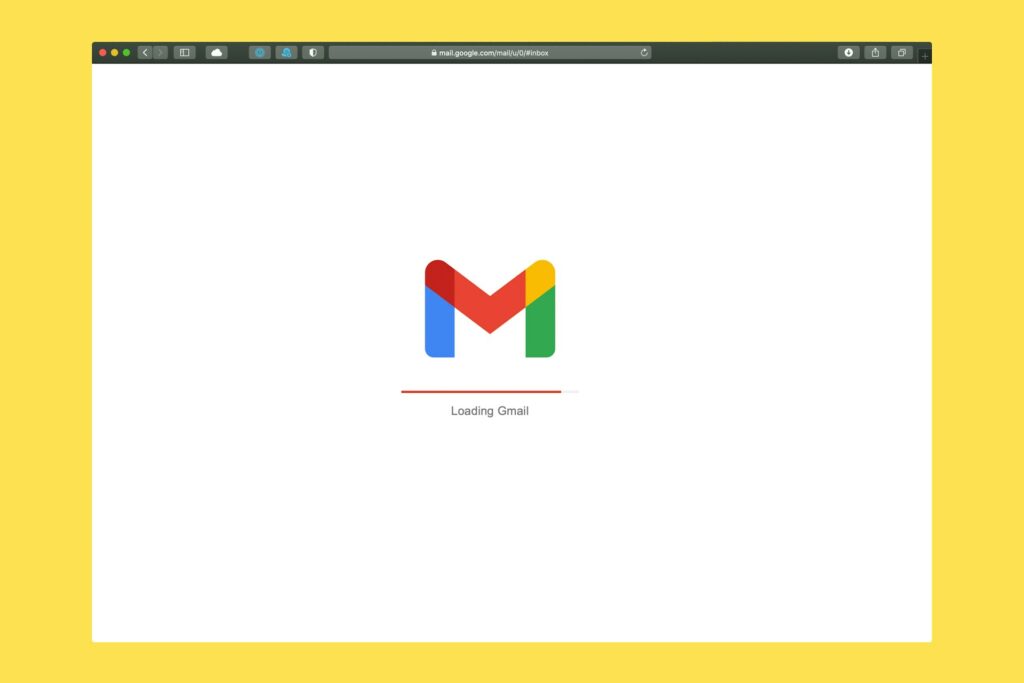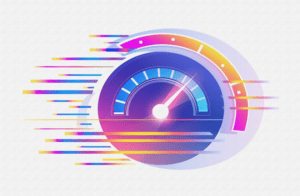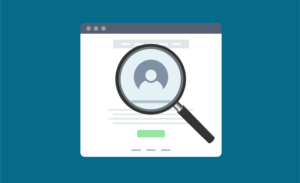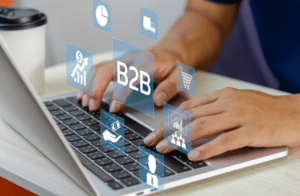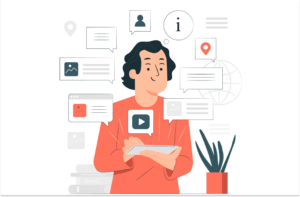Effective communication doesn’t just end when the meeting wraps up. It extends to how you follow up after the meeting. Your meeting follow up email will help clarify key takeaways and set up next steps with your prospect. But, we all know it’s not that easy to write an effective follow up email – or why else would you be here! In this guide we are going to go through how to write a follow up email and key things to keep in mind. First, let’s quickly go over why this email is even so important.
Why Your Follow Up Email Matters
After a meeting, participants often leave with different interpretations of what was discussed or agreed upon, leading to potential confusion or misalignment. A follow up email serves as a critical tool to eliminate ambiguity by summarizing the key points, decisions, and next steps in writing. It ensures that everyone involved has a clear understanding of their responsibilities and deadlines.
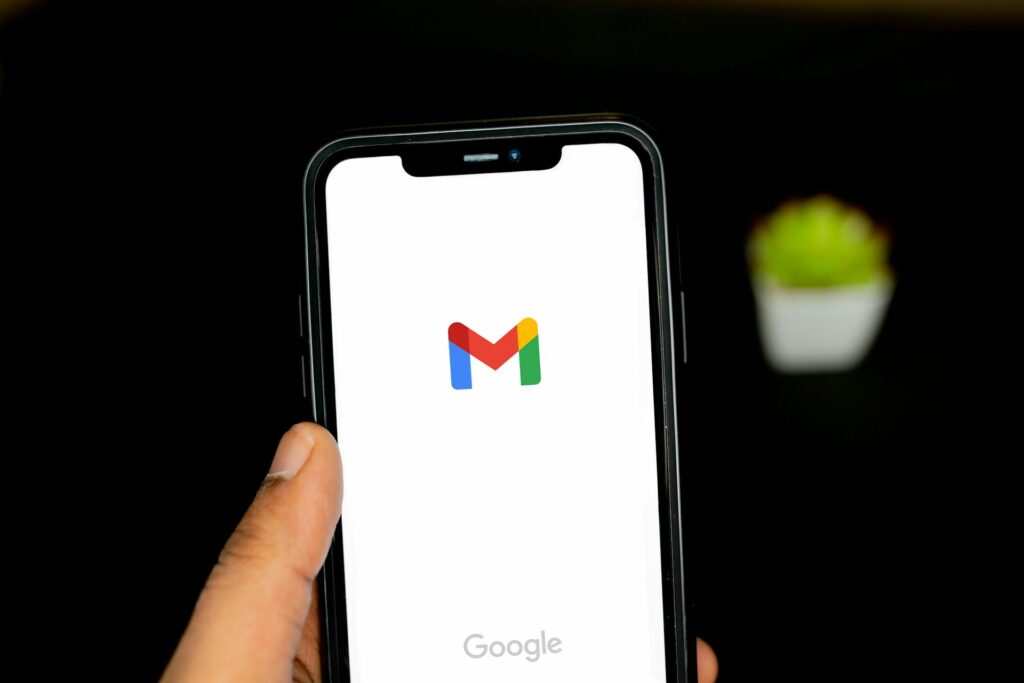
Meeting Follow Up Basics
After a meeting, it can be easy to forget even the basics and go straight to sending a proposal. In turn, this can be offputting for your lead.
Personalized Greeting
Start your email with a warm, personalized salutation. Address the recipient by name and reference the meeting directly to remind them of your interaction.
Hi [Name],
Thank you for taking the time to meet with me yesterday to discuss [specific topic]. It was great to hear your thoughts on [specific detail].
Express Gratitude
It’s important to show appreciation for their time and contribution to the meeting. This sets a positive tone and reinforces your intentions.
I really appreciate you sharing your expertise on [topic]. Your perspective provided valuable context for [specific goal].
Recap Key Points
Summarize the main topics or decisions from the meeting concisely. This ensures that everyone is aligned and provides an opportunity to clarify misunderstandings. Taking notes throughout the meeting or using a tool like Zoom AI Summaries can help ensure you don’t miss any important information. Try to keep these in bullet points, as paragraphs can make it confusing.
During our discussion, we agreed on the following points:
- [Key Point 1]
- [Key Point 2]
- [Key Point 3]
Define Next Steps
Specify action items, deadlines, and responsibilities. Be clear and direct to avoid confusion. This could be the date that you are going to follow up, the date that you can expect to have contract approval, when you will have feedback, etc.
To move forward, here are the next steps:
- [Person A] will complete [task] by [deadline].
- [Person B] will provide feedback on [project] by [date].
- I will follow up on [specific item] on [date].
Invite Questions
Before you close out, encourage open communication by inviting your prospect to ask questions or share any feedback they have. This shows that you care about their opinions and ensures nothing was overlooked.
Please let me know if you have any questions or if there’s anything you’d like to add to our next steps.
Closing Statement and Sign Off
To close off your meeting follow up, reiterate your enthusiasm and outline the next point of content. Additionally, ensure your email signature includes your full name, title, company, and contact information. This showcases professionalism and makes it easy for the recipient to get in touch.
I’m looking forward to hearing your thoughts on [specific item] and continuing our progress on [project]. Let’s plan to reconnect on [date/time] to review updates.
Strategies for Writing an Impactful Meeting Follow Up Email
Crafting a follow up email that resonates requires a thoughtful approach. Here are essential strategies to ensure your email is effective and well-received.
Send it Promptly
Timing is crucial when it comes to follow up emails. Sending your email within 24 hours of the meeting keeps the discussion fresh in the recipient’s mind and demonstrates your attentiveness. A timely email reinforces your professionalism and commitment to the action items discussed.
Keep It Concise
While it’s tempting to include every detail, a follow up email should be concise and to the point. Focus on key takeaways and next steps. If additional information is necessary, provide it as an attachment or a link to avoid overwhelming the recipient with a lengthy email. In addition, it’s helpful to break up large chunks of text with bullet points or multiple paragraphs.

Use a Professional Tone
You should try to tailor your tone of voice to the person you have met with. A formal tone is suitable for new clients or high-stakes meetings, while a more casual tone may work better for internal team members or long-term partners. Maintain a tone that reflects professionalism and respect.
Highlight Value
Show how the meeting and follow up actions align with the recipient’s goals or interests. Emphasize the benefits of taking the discussed next steps and how they contribute to shared objectives. Highlighting value keeps the recipient engaged and focused on the outcomes. It could be helpful to include a link to a relevant case study in your follow up or even in your email signature.
Proofread Before Sending
Errors in your follow up email can undermine its impact and your professionalism. Before hitting send, take a few moments to review your email for spelling, grammar, and tone. A polished email reflects attention to detail and leaves a positive impression. And, don’t forget to include any attachments!
How to Know if Your Prospect is Still Interested
Wouldn’t it be nice to know if your prospect visits your website after a meeting, to know what pages they are looking at? With the help of Visitor Queue, identify the companies that land on your website, how they got there, and the pages they view. This can not only help with lead generation, but also help your team stay on top of their current prospects. For example, if you just had a meeting with Company XYZ, and you see that they visit your pricing page shortly after, you’ll know that they are interested in what you have to offer and may be choosing between the plans you have available. Try Visitor Queue for free today to generate and track your leads.
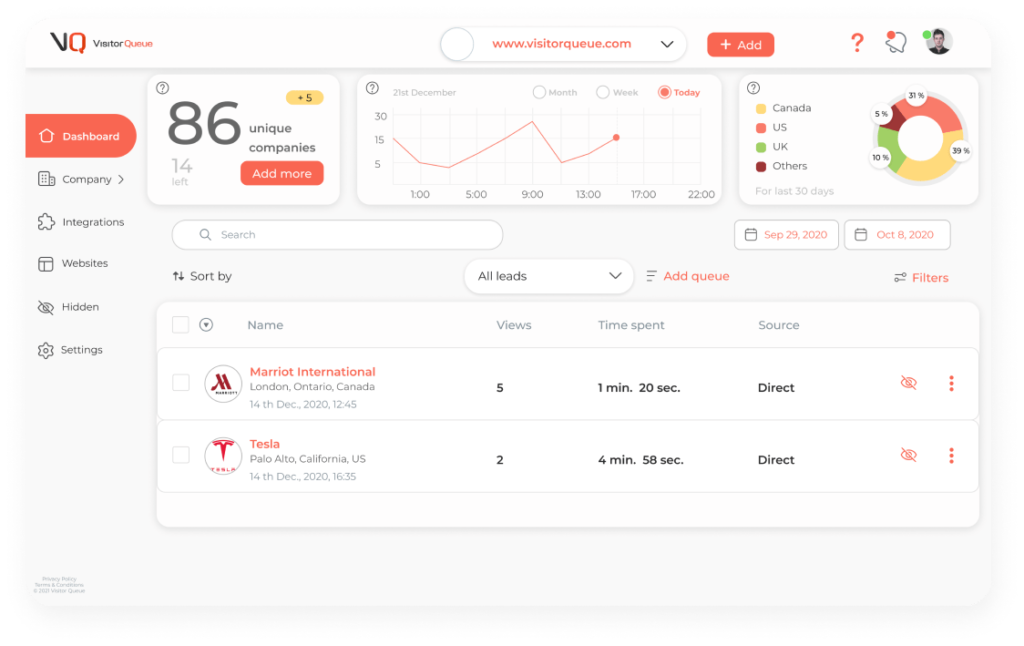
Wrap Up
By being prompt, concise, and clear, you can ensure that your follow up email drives action and leaves a positive impression. Whether you’re reconnecting with a potential client or reinforcing collaboration within your team, the strategies outlined here will help you craft emails that stand out and deliver results. Remember, take time to create your meeting follow up emails to ensure nothing is lost in translation. As always, if you have a question about using Visitor Queue to generate and track leads, do not hesitate to reach out.
 Identify
Identify Personalize
Personalize Benchmark
Benchmark Agencies
Agencies Integrations
Integrations Case Studies
Case Studies Use Cases
Use Cases Blog
Blog Resources
Resources